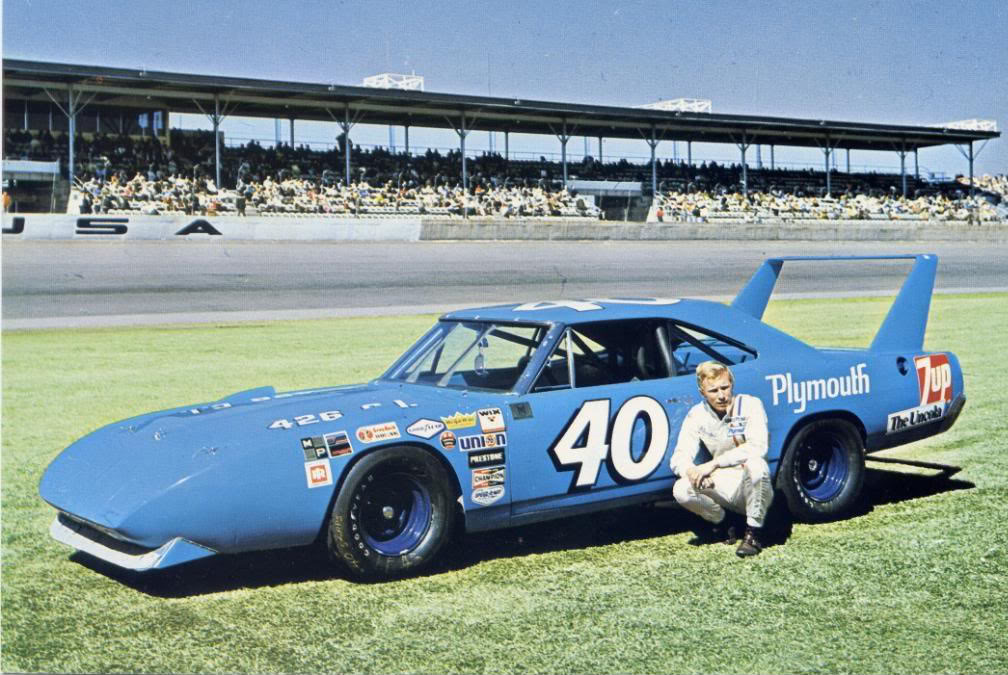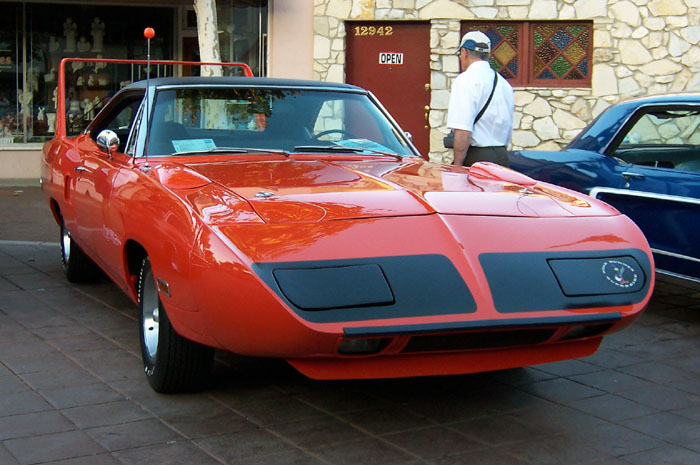Back in the 1970s, there were some interesting things came out of Detroit, and the Plymouth Superbird was one of them. With a wedge-shaped nose and an massive wing mounted on the rear trunk, the Superbird was something to behold. As you might imagine, there is a story behind these unusual cars and www.lynchchryslerdodgejeepram.com filled us in on the all the details.
The Plymouth Superbird was actually built with a singular purpose in mind and it was to win Nascar races. At the time, winning at NASCAR was a massive branding statement that could sell a lot of cars. It was a simple formula: win at NASCAR and your sales of the model that won exploded within days. There was a problem though – you couldn’t fake it. It was a “stock car race”. That meant in order to compete that you had to drive a car that was stock meaning “available to the general public”. It also had to be sold in sufficient numbers to make it a “real production model”. In 1970, the NASCAR rules required “one car for each of a manufacturer’s dealers in the United States”. That meant 1920 Superbirds needed to be built (!) and sold by the country’s entire stable of Plymouth dealers so that they could be able to race in NASCAR that year.
So that’s what Plymouth did. The Superbird was basically a modified Plymouth Road Runner. What the designers at Plymouth did was add a huge aerodynamic nose-cone, smoothed out the body, and added a very large rear wing. In the power department, the Superbirds could be optioned with three engines, a 440 cu. in. Super Commando with a single 4-barrel, a 440 cu. in. with a 6-pack, or the full race 426 hemi. For those who are wondering how many of these unusual cars were made, only 135 street cars were fitted with the Hemi; 665 took the option of the 440 Six Pack, and the rest were equipped with the 440 Super Commando with the four barrel carb.
So, how did they do in 1970? Superbirds did reasonably well on the NASCAR tracks, winning eight big races and placing well in many more. It certainly didn’t hurt that Richard Petty, known as one of the greatest NASCAR drivers ever, was behind the wheel of a Superbird during the 1970 Nascar season. In fact, he was the winner of many of those eight big races.
For all the drama, Plymouth made quite a name for itself in the 1970s but sales of actual Superbirds were another story. The exaggerated looks of the ‘Birds was a little extreme for many customers and most preferred the more conventional standard Roadrunner. As a result, Plymouth only made the Super Bird model for one year.
Today these cars, which represent a genuine slice of automotive history, are very, very valuable. A nice example of a genuine Superbird with the 426 Hemi option can bring $300,000 to $500,000 at auction.
Article Source: Lynch Chrysler Dodge Jeep Ram

